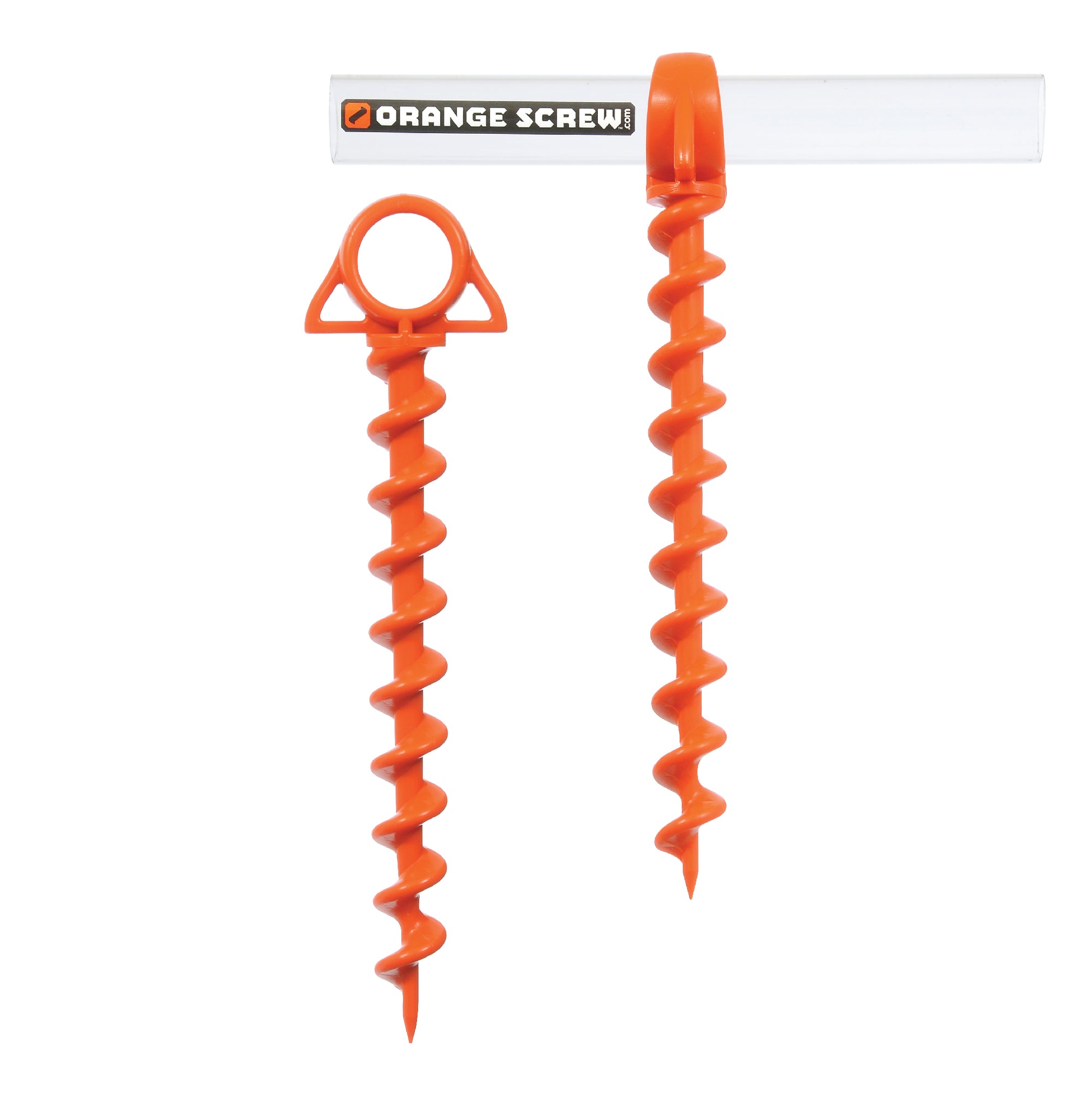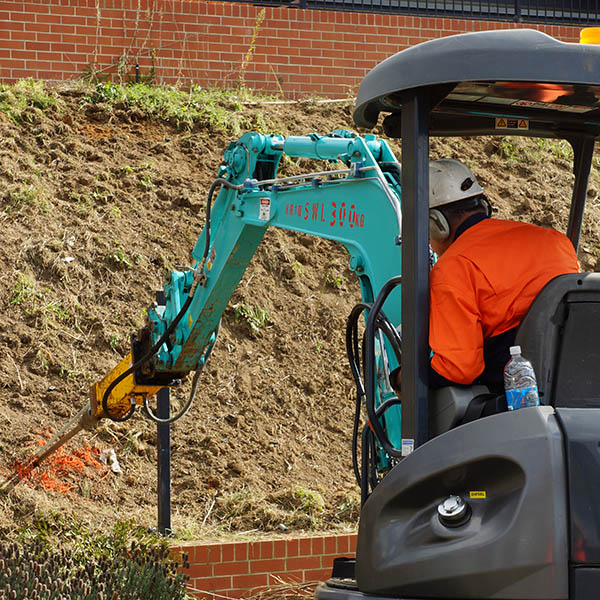Exactly How Sturdy Earth Anchors Job: A Comprehensive Guide to Dirt Anchoring Solutions
Durable Earth anchors play a crucial function in giving security and assistance in numerous building and construction applications. By embedding deeply into the ground, they resist vertical and side forces properly. Different kinds of anchors satisfy various soil problems, making them functional. Recognizing their auto mechanics and installment strategies is necessary for taking full advantage of efficiency. What factors affect their effectiveness, and just how do they compare to typical approaches? The responses may surprise you.
Comprehending Sturdy Earth Anchors
Heavy-duty Earth supports function as important parts in different building and construction and landscape design projects, giving security and assistance in challenging soil conditions. These supports work by being installed right into the ground, where they resist side and vertical pressures. Their style enables safe add-on to structures, guaranteeing they continue to be secured versus dirt movement or external loads.The performance of heavy-duty Earth supports greatly depends upon the kind of dirt and the anchor's installation deepness. Appropriate setup techniques are vital, as they identify the support's holding capability. Environmental variables, such as moisture and freeze-thaw cycles, can likewise impact performance.These supports are often made use of in applications ranging from securing fencings and maintaining walls to supporting short-lived structures throughout adverse weather. Comprehending the concepts behind durable Earth anchors is essential for specialists seeking to improve the resilience and safety of their tasks.
Kinds Of Heavy-Duty Earth Anchors
Numerous kinds of sturdy Earth supports are designed to meet details needs based upon soil problems and task requirements. Helical anchors, featuring screw-like blades, are efficient in softer dirts, offering high load abilities and very easy installment. Driven supports, which are inculcated the ground, appropriate for rocky terrains and give prompt load support. Tie-back supports are frequently made use of in preserving wall applications, enabling side assistance by anchoring right into the ground at an angle. One more kind is the cast-in-place support, perfect for concrete applications, as they are integrated into foundations for enhanced stability. Dirt screw anchors are functional options that can be utilized in different dirt types, supplying trustworthy stress and compression capacities. Each type serves distinctive applications, making certain security and safety in building and construction and landscaping jobs. Comprehending these alternatives enables for educated choices in picking the appropriate Earth anchoring solution.
The Mechanics of Soil Anchoring

Understanding the mechanics of soil anchoring calls for an evaluation of different kinds of Earth supports and their installation strategies. Each support type offers unique qualities that affect its efficiency in various dirt problems. Correct setup techniques are crucial for making best use of the securing system's stability and efficiency.
Kinds of Earth Anchors
Earth anchors, vital parts in soil anchoring systems, come in several types, each developed for details applications and dirt problems. One of the most common types include screw anchors, which are twisted right into the ground, providing strong side resistance. Helical anchors feature blades that allow for effective setup in various soil types, making them suitable for both permanent and temporary applications. Driven anchors, usually made from steel, are hammered right into the dirt and work in dense or rocky atmospheres. Auger supports utilize a helical style to assist in setup in softer dirts. Plate anchors consist of a flat plate hidden flat, distributing load over a larger location, suitable for applications needing high tons capacities in natural soils.
Installation Strategies Explained
Proper installment techniques are essential for the effectiveness of dirt anchoring systems. The process usually begins with website evaluation, confirming the picked location can sustain the anchor's load. After identifying the proper anchor kind, appropriate opening depth and angle must be developed. The installment includes driving the anchor into the ground using specific tools, such as manual or hydraulic vehicle drivers, to attain ideal embedment. Post-installation, tensioning the anchor is vital to assure security; this is commonly verified with tons screening. Additionally, surrounding dirt conditions need to be monitored to avoid variation. Following these methods not just enhances the anchor's efficiency yet likewise prolongs its life expectancy, providing trusted assistance for numerous applications.
Applications of Heavy-Duty Earth Anchors
While heavy-duty Earth anchors are usually associated with building and construction and landscape design, their versatility includes a range of applications across various sectors. In civil design, they provide important assistance for maintaining wall surfaces, making certain security in locations prone to soil erosion. The aquatic field makes use of these supports for safeguarding anchors and marinas, protecting against motion triggered by currents and tides. In addition, in the telecommunications market, durable Earth anchors are significant for maintaining cell towers and various other high structures against wind pressures. Agricultural applications additionally profit, as these supports can protect frameworks like greenhouses and livestock secure fencing, guaranteeing they endure extreme weather. In eco-friendly power tasks, such as wind ranches, Earth anchors play an important duty in safeguarding wind turbine foundations, boosting total safety and efficiency. This broad range of applications highlights the flexibility and dependability of durable Earth anchors throughout various areas.
Advantages Over Typical Anchoring Techniques
Although conventional anchoring approaches have long been trusted for stability, heavy-duty Earth supports offer significant advantages that enhance efficiency and effectiveness. One significant benefit is their superior load-bearing capability, which permits them to stand up to better forces without failing. This toughness makes them suitable for requiring applications, such as in building and energy installations.Additionally, heavy-duty Earth anchors are created for much deeper installation, supplying better security in different dirt conditions, consisting of loosened or sandy soils. Their resistance to rust and ecological factors ensures a longer life expectancy and lowered maintenance costs contrasted to standard methods.Moreover, these supports can be installed with minimal disruption to the surrounding area, preserving the honesty of the landscape. Generally, sturdy Earth anchors provide a reliable and dependable option for securing demands, surpassing the constraints frequently related to traditional anchoring techniques.
Setup Process and Best Practices
The installation process for soil anchoring services starts with comprehensive prep work and website evaluation to guarantee peak performance. Following this, a step-by-step installation guide gives clear guidelines for effective application (soil anchoring solutions). Abiding by these finest methods is crucial for attaining reliable and long-lasting anchoring results
Preparation and Site Assessment
Effective preparation and detailed site assessment are crucial steps in the installation of dirt anchoring solutions. Before advice installment, the soil kind must be examined to determine its bearing capacity and viability for securing. Performing a geotechnical study can supply essential info regarding soil make-up, wetness levels, and possible ground motion. Additionally, recognizing existing structures, plant life, and energies is important to stay clear of interference throughout setup. The location ought to be free from debris and obstacles to assure safe accessibility for devices. Climate conditions ought to additionally be kept an eye on, as damaging problems can affect both safety and security and read here installation efficiency. By diligently preparing the website and assessing all pertinent elements, the chance of successful support performance is significantly raised.
Step-by-Step Installment Guide
A complete installation process is essential for accomplishing perfect efficiency of dirt anchoring options. The installation begins with selecting the proper support type and guaranteeing the site is free from particles. Next off, appropriate opening placement is determined based on tons needs. As soon as the place is established, openings are pierced to the defined deepness and size utilizing the appropriate devices. The support is after that inserted into the hole, ensuring it is lined up properly. After safeguarding the support, dirt is backfilled and compressed to boost security. It is important to adhere to manufacturer guidelines throughout the procedure. A post-installation evaluation confirms that the anchors are effectively positioned and working as meant, offering dependable support for the designated application.

Upkeep and Assessment of Earth Anchors
Normal maintenance and assessment of Earth supports are vital for making sure long-term efficiency and stability. Routine checks permit the very early detection of problems such as deterioration, loosening up, or soil activity. Inspectors must seek signs of corrosion or degradation on the support parts, especially at the connection points. In addition, the surrounding dirt ought to be examined for disintegration or changes in wetness web content, which can affect anchor effectiveness.It is a good idea to develop a regular inspection routine, preferably at the very least annually, relying on environmental conditions. Throughout inspections, all visible elements should be cleaned up to eliminate dust or particles that can hide potential problems. Any signs of distress, such as tilting structures or unusual settling, ought to trigger instant assessment. Proper documents of evaluations can assist in tracking anchor performance in time and help with timely upkeep actions, making certain the anchors continue to be trusted and useful.
Regularly Asked Concerns
What Products Are Heavy-Duty Earth Anchors Typically Made From?
Heavy-duty Earth anchors are typically built from Discover More Here sturdy materials such as galvanized steel or stainless-steel, making sure stamina and resistance to rust. These materials give durable support and security in numerous dirt problems and applications.
Just How Do Dirt Problems Affect Support Performance?
Soil conditions greatly affect anchor efficiency. Elements such as soil kind, moisture web content, and compaction impact the support's hold and stability, with natural dirts often offering far better resistance than loose or sandy dirts, impacting general efficiency.
Can Heavy-Duty Earth Anchors Be Recycled After Elimination?
Heavy-duty Earth supports can be reused after elimination, given they are evaluated for damages and wear. Appropriate cleansing and upkeep improve their durability, making certain efficient performance in succeeding installments when conditions permit for secure reinstallation.
What Are the Ecological Impacts of Utilizing Earth Anchors?
The ecological impacts of utilizing Earth anchors consist of prospective dirt disruption, disturbance of regional ecological communities, and feasible contamination of groundwater. If used responsibly, their advantages often outweigh these worries, advertising stability in numerous applications.
Just how Do I Choose the Right Anchor for My Job?

Comments on “Manta Ray anchors: Perfect for Flood-Prone Areas”